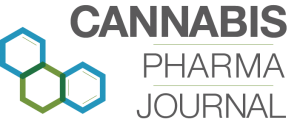Cannabis-based drug maker GW Pharmaceuticals plc recently announced that its experimental drug has produced promising results in a study of children with hard-to-treat epilepsy.
The company announced physician reports of efficacy and safety data on 27 children and young adults with treatment-resistant epilepsy who have been treated with GW’s investigational cannabidiol (CBD) product candidate, Epidiolex, for a period of 12 weeks. The treatment-resistant patients suffer from a range of epilepsies in which current anti-epileptic drugs have been unsuccessful in adequately controlling seizures, and include severe forms such as Dravet syndrome and Lennox-Gastaut syndrome.
Among the 27 patients who have been treated with Epidiolex for at least 12 weeks, two commenced treatment in 2013 and the remaining 25 patients commenced treatment in the first quarter of 2014. All of the patients were treated at New York University Langone Medical Center (NYU) or the University of California at San Francisco (UCSF).
“We are pleased to report preliminary data on Epidiolex which provides promising signals of efficacy in children with treatment-resistant epilepsy, including patients with Dravet syndrome. It is noteworthy that, of the patients who have responded to Epidiolex, a high proportion show a reduction in seizure frequency of greater than 50% and a portion of these patients were reported to be seizure-free at the end of 12 weeks of treatment,” said Justin Gover, GW’s Chief Executive Officer. “We believe that these signals of efficacy, together with the side effect profile observed to date, support GW’s decision to advance Epidiolex into a formal development program and we look forward to commencing a Phase 2/3 clinical trial of Epidiolex in Dravet syndrome in the second half of 2014.”
Among all patients, the mean overall reduction in seizure frequency as compared to baseline seizure frequency was 44 percent and median overall reduction in seizure frequency as compared to baseline seizure frequency was 42 percent. Forty-eight percent of all patients obtained at least a 50 percent reduction in seizure frequency as compared to baseline seizure frequency. Forty-one percent of all patients obtained at least a 70 percent reduction in seizure frequency as compared to baseline seizure frequency, and 22 percent of all patients obtained at least a 90 percent reduction in seizures. At the end of the 12 weeks, 15 percent of all patients were free of seizures.
“There remains an enormous unmet need in a range of pediatric and adult treatment-resistant epilepsy syndromes, which affect approximately 750,000 Americans. Some of the greatest needs are in children with severe epilepsy syndromes such as Dravet and Lennox-Gastaut, where frequent seizures often persist despite high doses of multiple anti-epileptic drugs,” said Orrin Devinsky, MD, Professor of Neurology, Neurosurgery, and Psychiatry at NYU School of Medicine, and Director, NYU Comprehensive Epilepsy Center. “The initial open-label study with Epidiolex has provided encouraging results. Some children have had marked reductions in their seizures and overall, the medication has been well tolerated.”
GW announced data for only convulsive seizures reported for each patient, the only type of seizures considered by the US Food and Drug Administration (FDA) in assessing primary efficacy for Dravet syndrome trials, in the nine patients with Dravet syndrome in the study. According to results, the mean reduction in seizure frequency as compared to baseline frequency was 52 percent and median reduction in seizure frequency as compared to baseline seizure frequency was 63 percent; 56 percent of Dravet patients obtained at least a 50 percent reduction in seizure frequency as compared to baseline seizure frequency; 44 percent of Dravet patients obtained at least a 70 percent reduction in seizure frequency as compared to baseline seizure frequency; 33 percent of Dravet patients obtained at least a 90 percent reduction in seizure frequency as compared to baseline seizure frequency; and at the end of 12 weeks, 33 percent of Dravet patients were free of seizures.
Dpidiolex was granted orphan drug designation by the FDA, which may ease the drug’s path to market and offer the company additional exclusivity.
Following the announcement, GW’s shares increased as much as 17 percent.
Source: GW Pharmaceuticals plc
Last updated: 6/19/14; 10:30am EST




